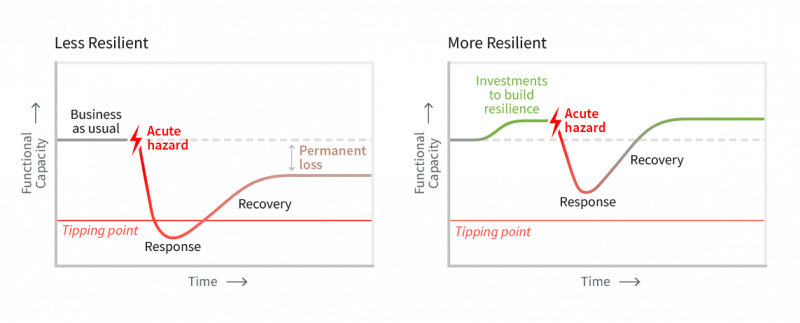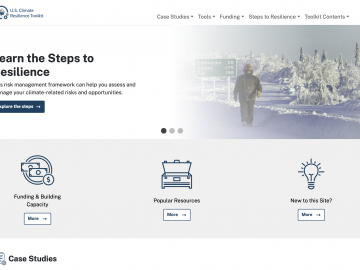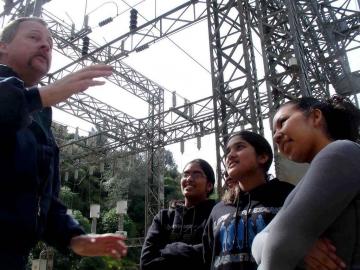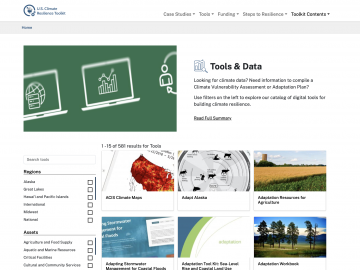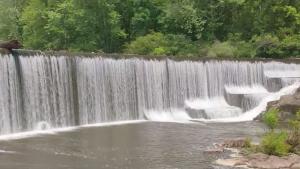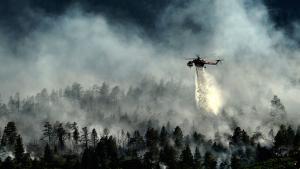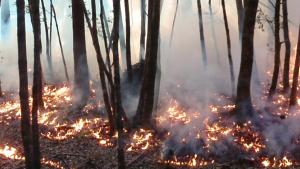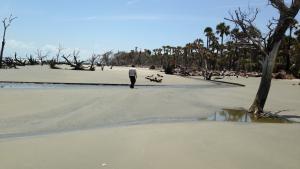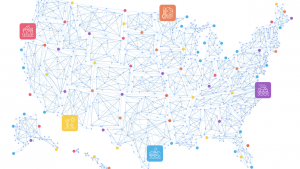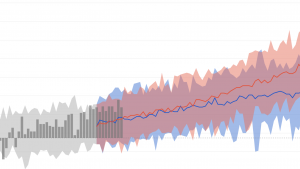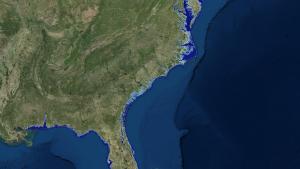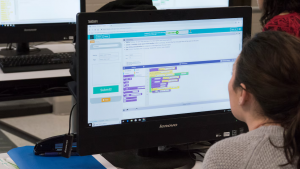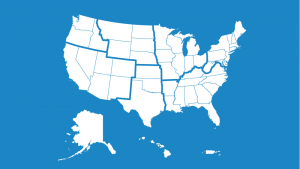Financial losses from climate-related hazards cost our nation billions of dollars every year. Taking action to build resilience ahead of a hazard can improve your current quality of life and reduce costs related to future hazards.
A Closer Look…
These two graphs show two levels of resilience.
On the left, a community asset or service operates at a steady state (business as usual). When a hazard occurs—for instance, a flood or a fire—the level of service the asset can provide drops. If the service is damaged so severely that its capacity drops below a tipping point—for example, a total loss of essential equipment—the service may not recover completely.
On the right, instead of business-as-usual, actions are taken to improve the community asset or service before a hazard occurs. From this higher baseline, the same hazard would still cause a drop in service and require a period of recovery, but the level of service eventually returns to its pre-hazard level.


